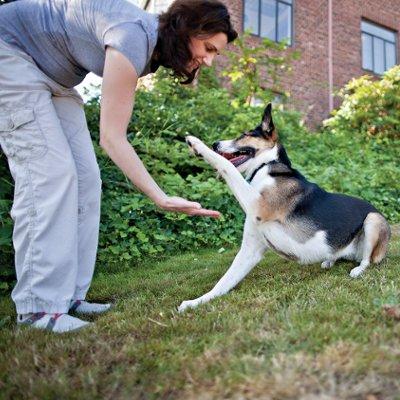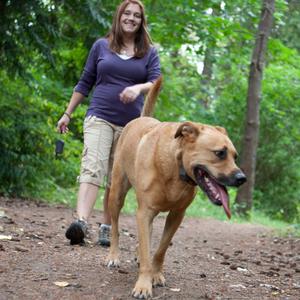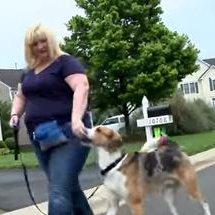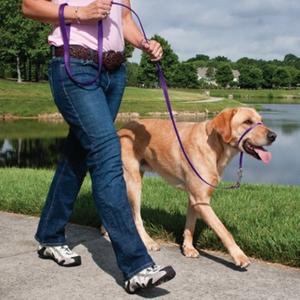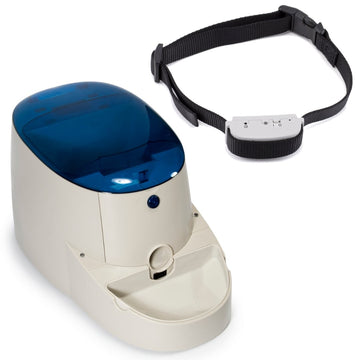Finding & Working with Obedience Trainers
-
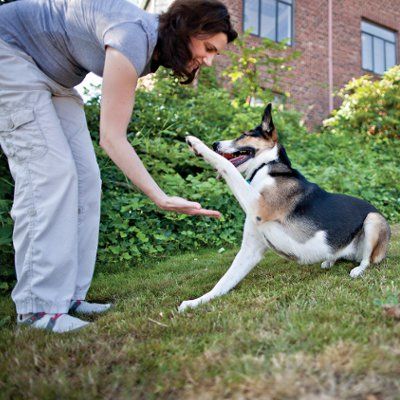 Positive teachers - Look for trainers who rely on teaching methods that use positive reinforcement for the right response rather than punishing the wrong one.
Positive teachers - Look for trainers who rely on teaching methods that use positive reinforcement for the right response rather than punishing the wrong one. - Test the waters - Observe an obedience class without your dog. Are the dogs and people having a good time? Talk with a few participants and see if they are comfortable with the trainer’s methods. If someone won’t let you sit in, don’t enroll.
- Watch and learn - Don’t allow trainers to work your dog unless they tell you first exactly what they plan to do.
- You're in charge - Don’t be afraid to tell a trainer to stop if he or she is doing something to your dog you don’t like.
- You know your dog - If a trainer tells you to do something that you don’t feel good about, don’t do it! Don’t be intimidated, bullied, or shamed into doing something that you believe is not in your dog’s best interest.
-
 No guarantees - Avoid trainers who offer guarantees about results. That trainer is either ignoring or doesn’t understand the complexity of animal behavior.
No guarantees - Avoid trainers who offer guarantees about results. That trainer is either ignoring or doesn’t understand the complexity of animal behavior. - Treat training - Avoid trainers who object to using food as a training reward. Food is an acceptable positive reinforcement training tool.
- No choke collars - Avoid trainers who use ONLY choke chains. Head collars are humane alternatives to choke chains and pinch collars.
- Mutual respect - Look for trainers who treat both people and dogs with respect, rather than an “I’m the boss” attitude.
Consider a Behavior Consultant
-
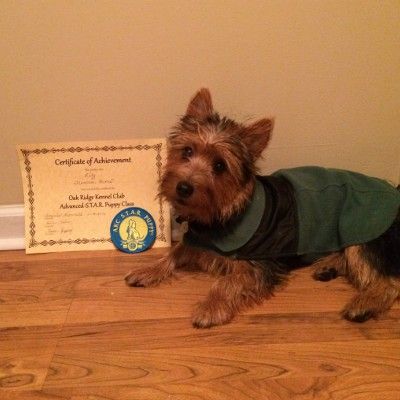 Street smarts & book smarts - Look for academic training in the science of animal behavior as well as “hands on” experience.
Street smarts & book smarts - Look for academic training in the science of animal behavior as well as “hands on” experience. - Certified - Certification tells you the individual has met the requirements for education, experience, and professional ethics.
- Training is a process - Look for people who recognize the importance of you working through the problem with your pet rather than sending it somewhere to be “fixed” by a trainer.
- Professional - Membership in a professional organization suggests communication with colleagues and a way to keep current on new information.
- References - Ask for professional references such as former clients, colleagues, and/or veterinarians who refer cases.
-
 Big toolbox - A knowledge of positive reinforcement methods, how to use food appropriately, and humane products such as head collars is a must.
Big toolbox - A knowledge of positive reinforcement methods, how to use food appropriately, and humane products such as head collars is a must. - Personality - Do you like the way the individual treats you, or is he or she abrupt and abrasive?
- No guarantees - Avoid people who guarantee problem resolution. Animals are complex. No one knows everything there is to know about them.
- No quick fixes - Avoid “quick fixes.” This approach does not do justice to you, your pet or the problem.
- No drugs - Beware of people who suggest the use of drugs as the first or only solution for a problem. Drug therapy is best used as part of a complete plan. Only veterinarians can prescribe drugs.
 Training Resources
Training Resources
Fetch free information from leading animal behaviorists at these websites. Both focus on positive training methods and communication with your pet. These sites do more than scratch the surface of training and behavior. You’ll find articles, podcasts, videos, blogs, and even a comprehensive dog training textbook

